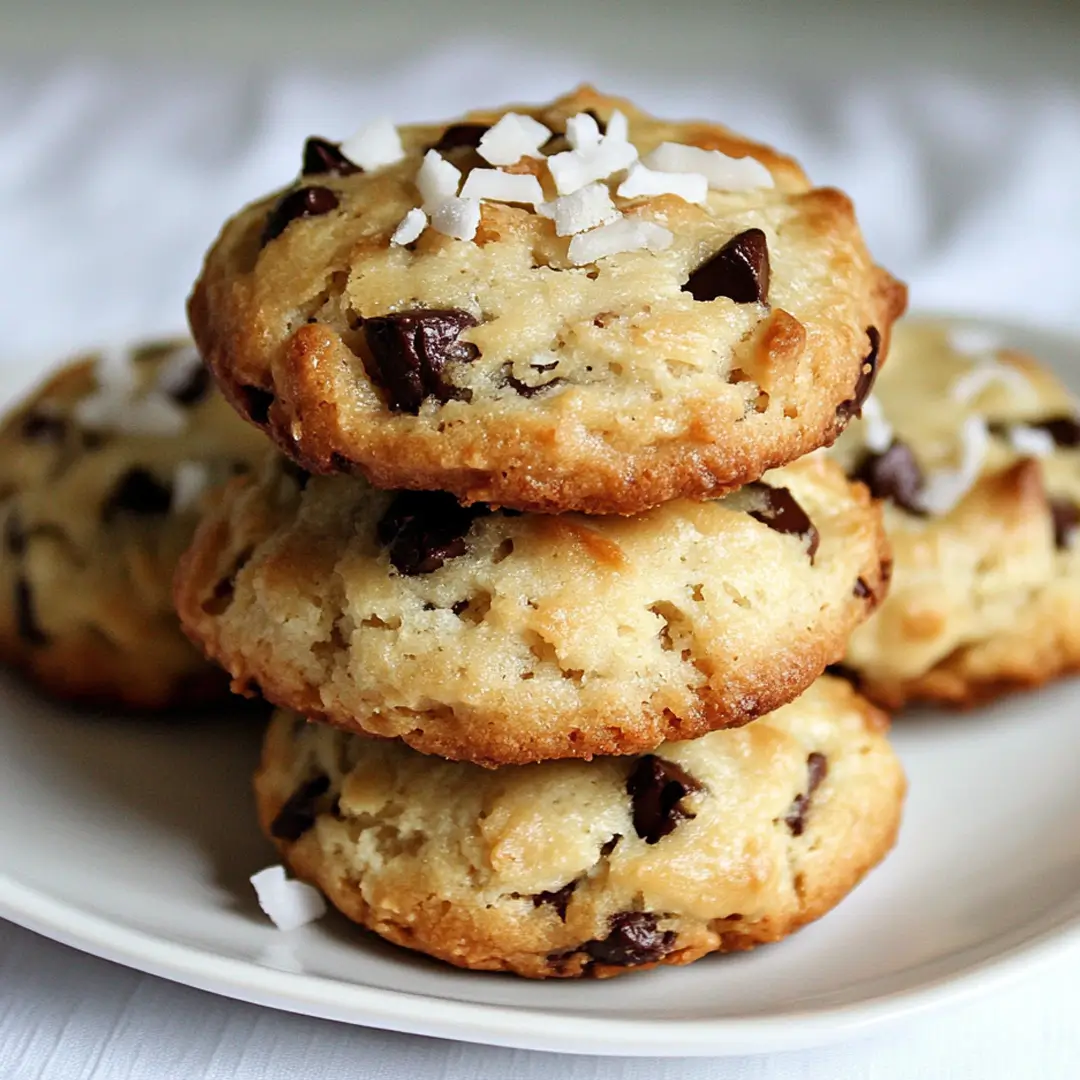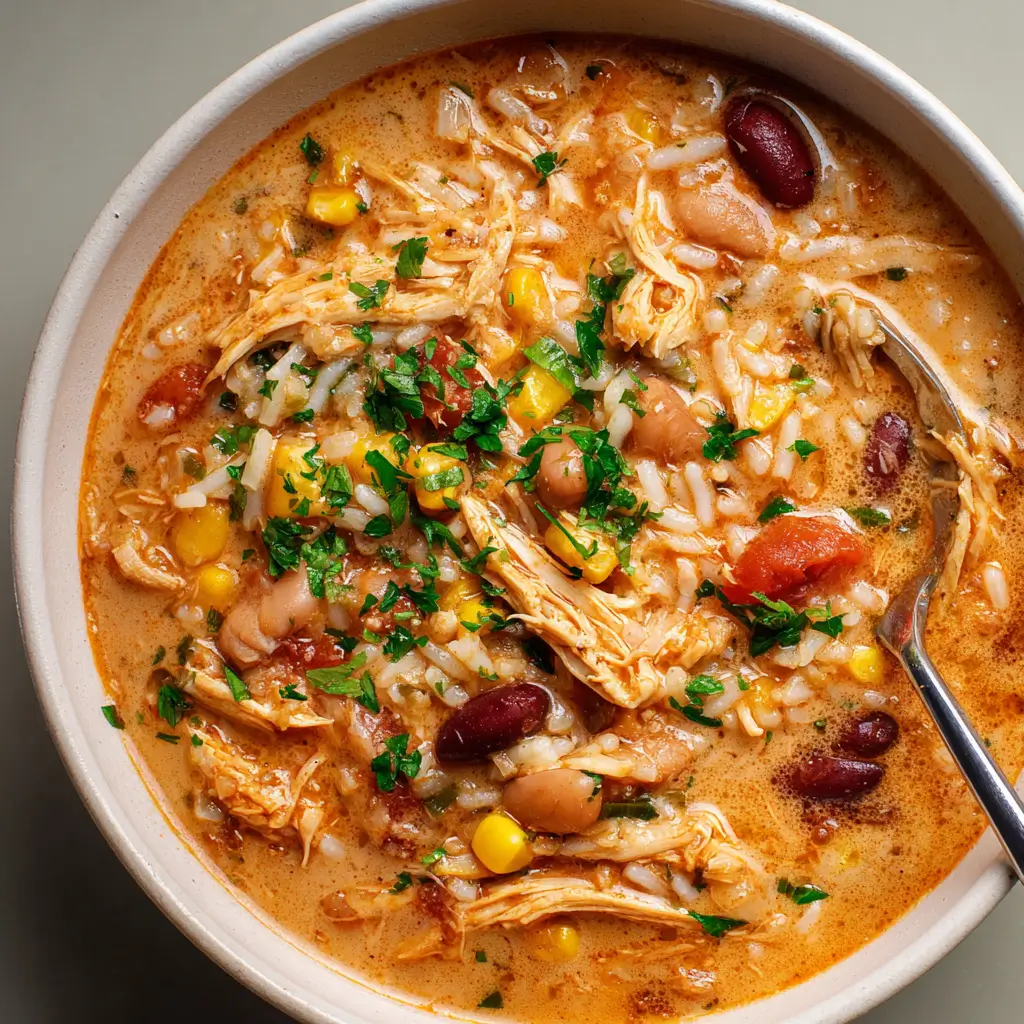Coconut milk biscuits are a simple, dairy-free twist on a classic comfort food. Made with full-fat coconut milk and cold coconut oil or vegan butter, they come out soft, flaky, and subtly rich with a hint of coconut flavor. Whether you’re avoiding dairy or just looking to try something different, these biscuits are a reliable go-to for dessert, brunch, or a savory side.
What I liked most about them was how easy they were to make without sacrificing texture. I was initially curious whether coconut milk could really deliver the same tenderness as buttermilk or cream, and it turns out it can. The layers held up well, the flavor was balanced, and they paired easily with both sweet and savory toppings.
Key Ingredients
Core Ingredients for Coconut Milk Biscuits
Great biscuits start with great basics and the secret to coconut milk biscuits is using a balance of fat, moisture, and leavening to achieve that perfect lift and tenderness.
-
All-purpose flour: It’s versatile and gives your biscuits enough structure while keeping them soft. Don’t use bread flour it’s too high in protein and can make the biscuits tough.
-
Baking powder: This is your rising agent. Go for aluminum-free baking powder for a cleaner flavor.
-
Salt: Just a pinch enhances flavor. Don’t skip it it balances the sweetness of the coconut milk.
-
Coconut milk (full-fat, unsweetened): This is where the magic happens. It replaces dairy milk while adding richness, slight sweetness, and moisture. The fat content is key to the texture don’t substitute with light versions.
-
Fat: Either solid coconut oil or plant-based butter works. Coconut oil brings a subtle coconut flavor, while vegan butter mimics that classic biscuit taste. Just make sure it’s cold to create flaky layers.
Optional Additions
Want to take your coconut milk biscuits up a notch? Try these optional ingredients:
-
Shredded coconut: Adds chew and amps up the tropical vibe.
-
Lemon or lime zest: Gives the dough a citrusy lift especially nice in sweet applications.
-
Maple syrup: For a lightly sweet biscuit, drizzle in a tablespoon or two.
-
Chopped herbs (like rosemary or thyme): Great for savory versions.
-
Vegan cheese or nutritional yeast: Adds depth and umami to your biscuits.
How to Make Coconut Milk Biscuits

Step 1: Prep Your Ingredients and Tools
First things first mise en place matters. That’s just a fancy way of saying “get everything ready.” Preheat your oven to 425°F (220°C) and line a baking sheet with parchment paper. It helps the biscuits bake evenly and makes cleanup easier.
Next, gather and measure your ingredients. Coconut milk biscuits rely on cold fat and precise mixing to achieve their signature flaky texture. Chill your coconut milk and coconut oil (or vegan butter) beforehand. This step is crucial because cold fat creates steam as it bakes, forming airy layers inside the dough.
Why it matters: Warm ingredients can cause the fat to melt too early, leading to dense, flat biscuits instead of those fluffy layers you’re after.
Step 2: Mix Dry and Wet Separately
In one bowl, whisk together your flour, baking powder, and salt. This ensures the leavening agent is evenly distributed. In another bowl, stir your cold coconut milk and solid fat. You’ll want pea-sized clumps of fat to remain it’s those bits that give biscuits their flaky crumb.
Slowly pour the wet mix into the dry mix, folding just until combined. Don’t overwork it your dough should be shaggy, not smooth. Overmixing activates the gluten in the flour and can make your biscuits chewy, not tender.
Step 3: Form and Bake
Turn your dough onto a floured surface, gently press it into a 1-inch thick rectangle, and fold it over itself 2–3 times. This folding helps create layers. Use a biscuit cutter or glass to punch out rounds, then place them on your prepared tray.
Bake for 12–15 minutes until golden on top.
Variations of Coconut Milk Biscuits
Sweet Coconut Biscuits
Looking to lean into the naturally sweet, tropical flavor of coconut? These coconut milk biscuits easily adapt into a delightful treat with a few thoughtful tweaks. Add a couple of tablespoons of maple syrup or coconut sugar to the dry ingredients, then fold in a handful of shredded coconut. A dash of vanilla extract and a sprinkle of cinnamon can round out the sweetness.
These are perfect for dessert or as a base for shortcake-style desserts. I once served them with mango jam and a dollop of coconut whipped cream it was a hit at a weekend brunch.
Savory Herb Coconut Biscuits
If savory’s more your style, coconut milk biscuits still hold up. Mix in fresh chopped herbs like rosemary, thyme, or chives. You can even add a spoonful of nutritional yeast or vegan cheese shreds for an umami kick. The coconut flavor becomes more subtle in savory versions, blending beautifully with aromatic ingredients.
Pair them with a warm bowl of soup or a hearty stew for a comforting, satisfying meal.
Spiced Coconut Biscuits
Want to add a bit of spice? Ground cinnamon, nutmeg, or cardamom works wonders in these biscuits. It gives them warmth and complexity, making them ideal for fall baking. These spiced biscuits pair well with chai tea or apple butter.
Gluten-Free Coconut Biscuits
Yes, you can make coconut milk biscuits gluten-free! Use a 1:1 gluten-free flour blend, but be sure to choose one that contains xanthan gum for structure. Gluten-free dough is usually more delicate, so handle it gently and avoid overmixing.
For more delicious recipes, check out on Apple Pie Biscuits. It’s a perfect companion to the coconut version if you’re exploring different biscuit styles.
Common Mistakes & Fixes
Dough Too Wet or Sticky
This is one of the most common hiccups when making coconut milk biscuits. Coconut milk can vary in thickness, especially between brands. If your dough feels too wet, don’t panic. Just sprinkle in a bit of extra flour a tablespoon at a time until it holds together but isn’t overly dry.
Why it happens: Some coconut milks have a higher water content, which throws off the flour-to-liquid balance.
Flat or Spreading Biscuits
When your biscuits turn out flat or spread too much, it’s usually because the fat was too warm. Warm fat blends too much into the dough, losing the air pockets that help biscuits rise.
To fix this, chill your dough for 10–15 minutes before shaping. You’ll see a big difference in height and structure.
Real tip: I learned this after a few batches melted into each other on the tray. A simple 10-minute chill in the fridge fixed everything.
Tough Texture
Overmixing is often the culprit here. The more you stir, the more gluten develops, which creates a chewy not tender texture.
Instead, stop mixing when the dough just comes together. It’s okay if it looks a little rough.
Dry or Crumbly Biscuits
Using light coconut milk or too much flour can dry things out. Always use full-fat coconut milk, and don’t pack your flour tightly into the cup. Spoon it in and level it off with a knife.
FAQs
Can you substitute coconut milk for milk in biscuits?
Yes, absolutely. Coconut milk is a great one-to-one substitute for dairy milk in biscuits. It adds moisture and a subtle coconut flavor without needing extra adjustments to the recipe. Just make sure to use the full-fat, unsweetened version for best results.
What does coconut milk do in baking?
Coconut milk brings both richness and moisture to baked goods. In coconut milk biscuits, it acts as both a liquid and a fat source especially if you’re using coconut oil alongside it. This results in tender, flaky biscuits without the need for butter or cream.
Why it works: The natural fat in coconut milk mimics the mouthfeel of dairy, while the light sweetness balances out savory or neutral flavors.
Can I bake with coconut milk instead of milk?
Yes, and it works well in a wide range of baked goods from muffins and pancakes to cakes and biscuits. You might need to adjust sugar levels slightly if you’re using sweetened coconut milk, but for coconut milk biscuits, stick with unsweetened to keep it balanced.
When not to use coconut milk?
Avoid using coconut milk when you don’t want any coconut flavor. Even the unsweetened kind has a slight taste that can clash with some recipes especially in savory dishes where a neutral dairy profile is preferred.
Also, if a recipe relies on a very light texture or strong tang (like traditional buttermilk biscuits), coconut milk may not offer the same lift or acidity unless paired with lemon juice or vinegar.
Print
Coconut milk biscuits
- Total Time: 30 minutes
- Yield: 24 cookies 1x
Description
These Coconut Milk Chocolate Chip Cookies are a delightful twist on the classic favorite. Incorporating rich coconut milk and shredded coconut, they offer a moist, chewy texture with a subtle tropical flavor. Perfect for those seeking a dairy-free option without compromising on taste, these cookies are studded with cacao nibs or mini chocolate chips, providing a satisfying crunch in every bite. Whether enjoyed as an afternoon snack or a sweet treat after dinner, these cookies are sure to please both coconut and chocolate lovers alike.
Ingredients
Cookies
1 ½ cups all-purpose flour
1 teaspoon baking powder
¼ teaspoon salt
¾ cup brown sugar
½ cup unsalted butter, at room temperature
2 egg yolks
1 teaspoon vanilla extract
½ cup canned coconut milk or coconut cream
¾ cup cacao nibs or mini chocolate chips
¼ cup unsweetened shredded coconut
Topping
½ cup unsweetened shredded coconut
¼ cup cacao nibs or mini chocolate chips
Instructions
-
Preheat and Prepare Baking Sheet
-
Preheat your oven to 350°F (175°C).
-
Line a baking sheet with parchment paper to prevent sticking.
-
-
Mix Dry Ingredients
-
In a medium bowl, whisk together the all-purpose flour, baking powder, and salt. Set aside.
-
-
Cream Butter and Sugar
-
In a large mixing bowl, beat the unsalted butter and brown sugar together until light and fluffy.
-
Add the egg yolks and vanilla extract, mixing until well combined.
-
-
Incorporate Coconut Milk
-
Gradually add the coconut milk or coconut cream to the butter mixture, mixing until smooth.
-
-
Combine Wet and Dry Ingredients
-
Slowly add the dry ingredients to the wet mixture, stirring until just combined.
-
Fold in the cacao nibs or mini chocolate chips and the shredded coconut.
-
-
Shape Cookies
-
Using a tablespoon or cookie scoop, drop dough onto the prepared baking sheet, spacing them about 2 inches apart.
-
Gently flatten each cookie with the back of the spoon.
-
-
Add Toppings
-
Sprinkle the tops of the cookies with additional shredded coconut and cacao nibs or mini chocolate chips.
-
-
Bake
-
Bake in the preheated oven for 12-15 minutes, or until the edges are golden brown.
-
-
Cool
-
Allow the cookies to cool on the baking sheet for 5 minutes before transferring them to a wire rack to cool completely.
-
Notes
- Coconut Milk vs. Coconut Cream: Using coconut cream will yield a richer, denser cookie, while coconut milk provides a lighter texture.
- Storage: Store cookies in an airtight container at room temperature for up to 5 days.
- Freezing: Dough can be frozen for up to 3 months. Thaw in the refrigerator before baking.
- Add-ins: Feel free to add chopped nuts or dried fruit for additional texture and flavor.
- Prep Time: 15 minutes
- Cook Time: 15 minutes
- Category: Dessert
- Method: Baking
- Cuisine: American
Nutrition
- Serving Size: 1 cookie
- Calories: 130
- Sugar: 8g
- Sodium: 16mg
- Fat: 7g
- Saturated Fat: 5g
- Unsaturated Fat: 2g
- Carbohydrates: 12g
- Fiber: 1g
- Protein: 2g
- Cholesterol: 15mg
Keywords: coconut milk cookies, chocolate chip cookies, dairy-free cookies, coconut cookies, easy cookie recipe



